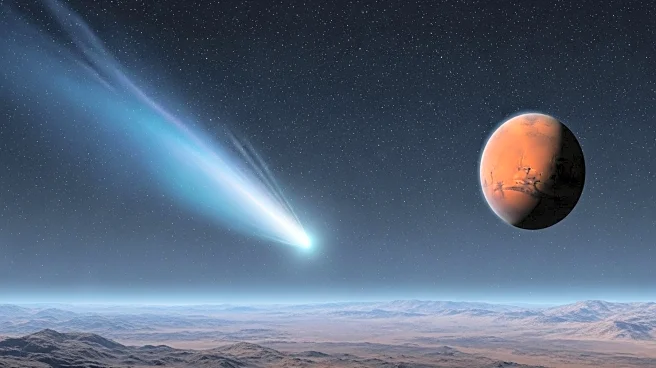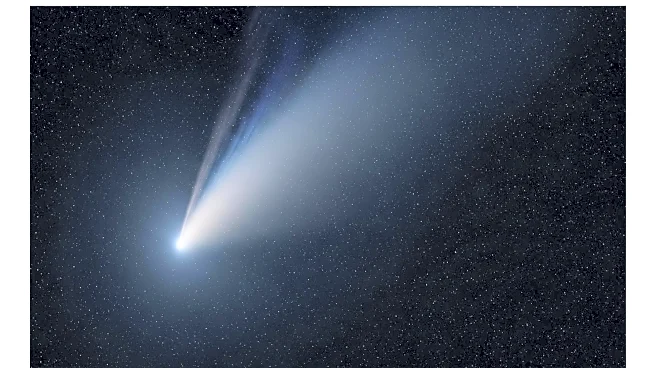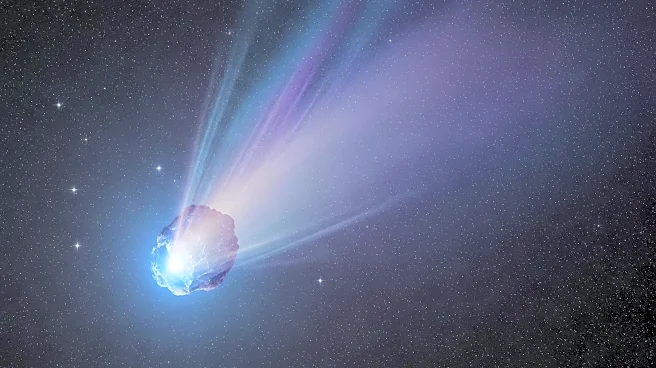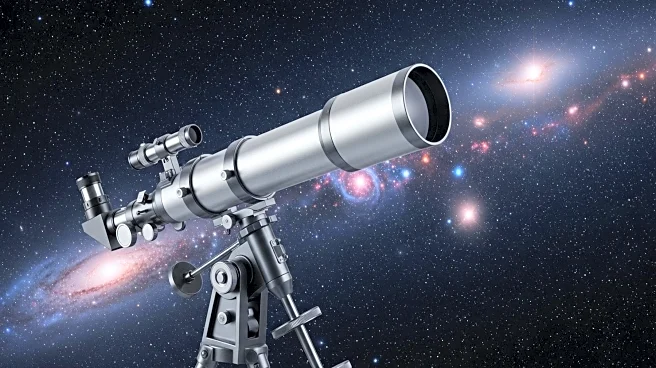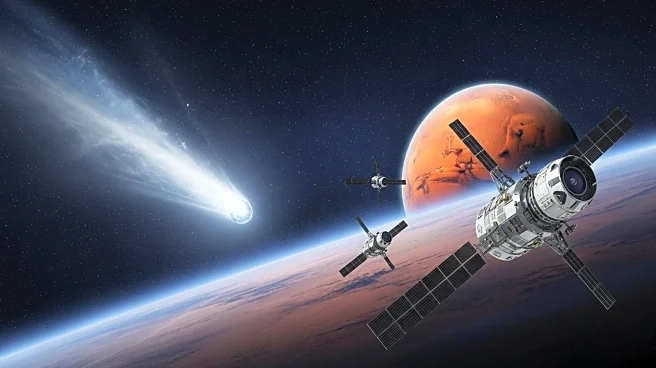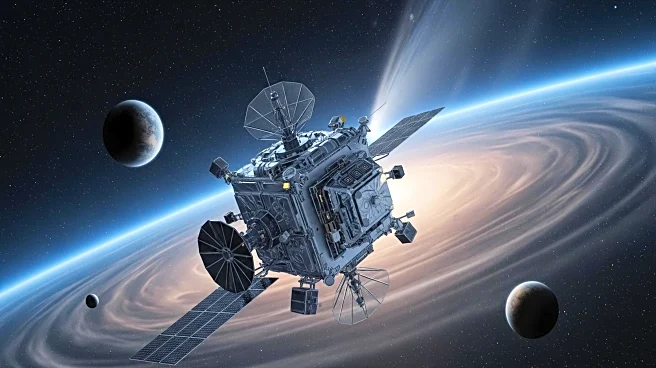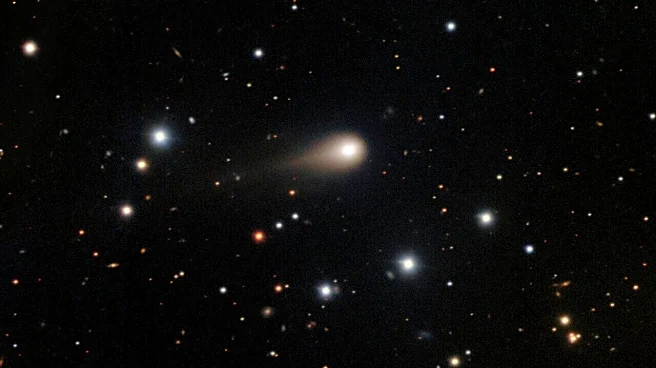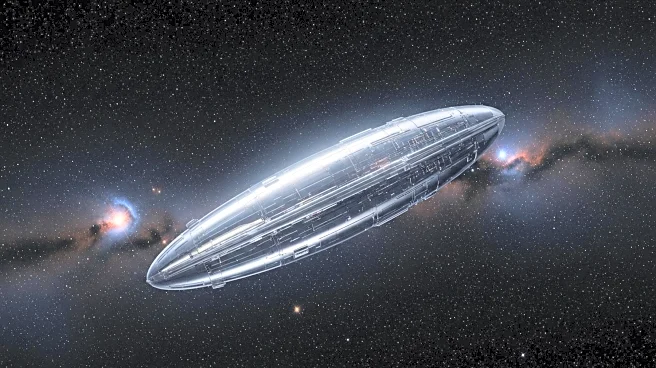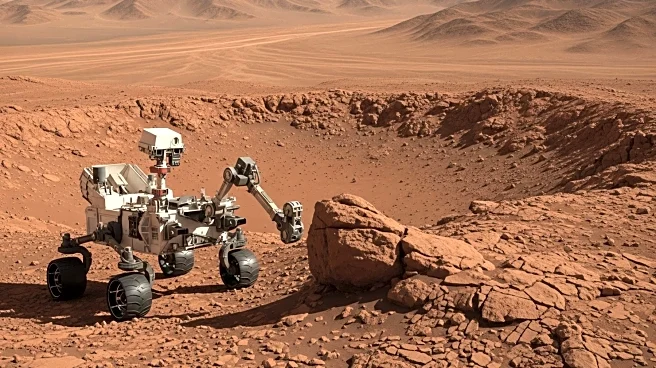What's Happening?
On October 3, 2025, interstellar comet 3I/Atlas made a close approach to Mars, passing within 29 million kilometers of the planet. This event marked the comet's nearest pass to any planet in our solar system. NASA's Mars Reconnaissance Orbiter, along with ESA's Mars Express and ExoMars Trace Gas Orbiter, were among the spacecraft that captured imaging and spectroscopic data of the comet. The observations revealed a significant carbon-dioxide plume surrounding the comet, which is unusual compared to typical solar system comets that primarily release water ice. The data collected during this period is expected to provide valuable insights into the comet's chemical composition and activity.
Why It's Important?
The flyby of comet 3I/Atlas presents a unique opportunity for scientists to study an interstellar object up close. The data gathered could help researchers understand the differences and similarities between comets formed in our solar system and those from other star systems. This could provide insights into the building blocks of planetary systems across the galaxy. The presence of a large carbon-dioxide plume suggests that 3I/Atlas may have a different chemical makeup than comets typically observed in our solar system, potentially indicating the presence of exotic chemicals or novel compounds.
What's Next?
Following its Mars flyby, ESA's Jupiter Icy Moons Explorer (JUICE) will observe 3I/Atlas between November 2 and 25, 2025, as the comet reaches perihelion, its closest approach to the Sun. This period is expected to reveal the comet's full gas and dust composition, providing a 'chemical fingerprint' that could further illuminate its origins. The comet will remain distant from Earth, with its closest approach occurring in December 2025, allowing for continued observation as it moves away from the Sun.
Beyond the Headlines
The study of 3I/Atlas could challenge existing theories about cometary behavior and composition. Some scientists have speculated about the comet's unusual characteristics, such as its 'anti-tail' and the presence of cyanide and nickel, which could suggest industrial-like processes. However, the mainstream scientific view remains that 3I/Atlas is a natural comet, and its study could enhance our understanding of the diversity of cometary bodies in the universe.

